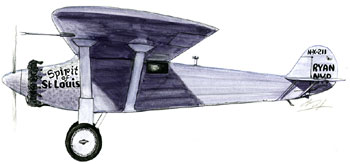|
Huno Rätsep
Huno Rätsep (born 28 December 1927 in Tartu) is an Estonian linguist. In 1951 he graduated from University of Tartu, Tartu State University. Since 1953 he has taught at the University of Tartu, since 1977, a professor. His main fields of research have been structural linguistics and generative grammar, grammar of Estonian language. Since 1981 he is a member of Estonian Academy of Sciences. 1982-1982 he was the chairperson of Mother Tongue Society. Awards * 1998: Wiedemann Language Award * 2001: Order of the White Star, IV class. Works * Eesti keele ajalooline morfoloogia I (1977, 21982) * Eesti keele lihtlausete tüübid (1978) * Eesti keele ajalooline morfoloogia II (1979) * Sõnaloo raamat (2002) References Living people 1927 births Linguists from Estonia University of Tartu alumni Academic staff of the University of Tartu Recipients of the Order of the White Star, 4th Class People from Tartu {{Estonia-academic-bio-stub ... [...More Info...] [...Related Items...] OR: [Wikipedia] [Google] [Baidu] |
Tartu
Tartu is the second largest city in Estonia after Tallinn. Tartu has a population of 97,759 (as of 2024). It is southeast of Tallinn and 245 kilometres (152 miles) northeast of Riga, Latvia. Tartu lies on the Emajõgi river, which connects the two largest lakes in Estonia, Lake Võrtsjärv and Lake Peipus. From the 13th century until the end of the 19th century, Tartu was known in most of the world by variants of its historical name Dorpat. Tartu, the largest urban centre of southern Estonia, is often considered the "intellectual capital city" of the country, especially as it is home to the nation's oldest and most renowned university, the University of Tartu (founded in 1632). Tartu also houses the Supreme Court of Estonia, the Ministry of Education and Research (Estonia), Ministry of Education and Research, the Estonian National Museum, and the oldest Estonian-language theatre, Vanemuine. It is also the birthplace of the Estonian Song Festivals. Tartu was designated as the E ... [...More Info...] [...Related Items...] OR: [Wikipedia] [Google] [Baidu] |
Estonia
Estonia, officially the Republic of Estonia, is a country in Northern Europe. It is bordered to the north by the Gulf of Finland across from Finland, to the west by the Baltic Sea across from Sweden, to the south by Latvia, and to the east by Russia. The territory of Estonia consists of the mainland, the larger islands of Saaremaa and Hiiumaa, and over 2,300 other islands and islets on the east coast of the Baltic Sea. Its capital Tallinn and Tartu are the two largest List of cities and towns in Estonia, urban areas. The Estonian language is the official language and the first language of the Estonians, majority of its population of nearly 1.4 million. Estonia is one of the least populous members of the European Union and NATO. Present-day Estonia has been inhabited since at least 9,000 BC. The Ancient Estonia#Early Middle Ages, medieval indigenous population of Estonia was one of the last pagan civilisations in Europe to adopt Christianity following the Northern Crusades in the ... [...More Info...] [...Related Items...] OR: [Wikipedia] [Google] [Baidu] |
University Of Tartu
The University of Tartu (UT; ; ) is a public research university located in the city of Tartu, Estonia. It is the national university of Estonia. It is also the largest and oldest university in the country.About the University University of Tartu The university was founded under the name of ''Academia Gustaviana'' in 1632 by Baron Johan Skytte, the of Swedish Livonia, |
Structural Linguistics
Structural linguistics, or structuralism, in linguistics, denotes schools or theories in which language is conceived as a self-contained, self-regulating semiotic system whose elements are defined by their relationship to other elements within the system. It is derived from the work of Swiss linguist Ferdinand de Saussure and is part of the overall approach of structuralism. Saussure's '' Course in General Linguistics'', published posthumously in 1916, stressed examining language as a dynamic system of interconnected units. Saussure is also known for introducing several basic dimensions of semiotic analysis that are still important today. Two of these are his key methods of syntagmatic and paradigmatic analysis, which define units syntactically and lexically, respectively, according to their contrast with the other units in the system. Other key features of structuralism are the focus on systematic phenomena, the primacy of an idealized form over actual speech data, the priori ... [...More Info...] [...Related Items...] OR: [Wikipedia] [Google] [Baidu] |
Generative Grammar
Generative grammar is a research tradition in linguistics that aims to explain the cognitive basis of language by formulating and testing explicit models of humans' subconscious grammatical knowledge. Generative linguists, or generativists (), tend to share certain working assumptions such as the competence–performance distinction and the notion that some domain-specific aspects of grammar are partly innate in humans. These assumptions are rejected in non-generative approaches such as usage-based models of language. Generative linguistics includes work in core areas such as syntax, semantics, phonology, psycholinguistics, and language acquisition, with additional extensions to topics including biolinguistics and music cognition. Generative grammar began in the late 1950s with the work of Noam Chomsky, having roots in earlier approaches such as structural linguistics. The earliest version of Chomsky's model was called Transformational grammar, with subsequent itera ... [...More Info...] [...Related Items...] OR: [Wikipedia] [Google] [Baidu] |
Estonian Academy Of Sciences
Founded in 1938, the Estonian Academy of Sciences (, ) is Estonia's national academy of science in Tallinn. As with other national academies, it is an independent group of well-known scientists whose stated aim is to promote research and development, encourage international scientific cooperation, and disseminate knowledge to the public.Academy web page at the Estonian Academy of Sciences. Accessed on line September 12, 2007. As of March 2017, it had 77 full members and 20 foreign members. Since 15 October 2014, the president of the Academy is the mathematician Tarmo Soomere.Facts of history web page at the Estonian Academy ... [...More Info...] [...Related Items...] OR: [Wikipedia] [Google] [Baidu] |
Mother Tongue Society
Mother Tongue Society () is an Estonian organization that focuses on topics related to the Estonian language. The organization was established on 23 March 1920 at Tartu University. Today, the organization is located in Tallinn. The organization is an associated organization of Estonian Academy of Sciences. Publications * Akadeemilise Emakeele Seltsi aastaraamat, 1921–1926 * Eesti Keel, 1922–1940 * Emakeele Seltsi Aastaraamat, 1955– * Kodumurre, 1960–2002 * Oma Keel, 2000– Directors Directors: * Lauri Kettunen: 1920–1924 * Andrus Saareste: 1925–1933, 1935, 1936–1941 * Julius Mägiste: 1934, 1936 * Arnold Kask: 1944, 1968–1982 * Johannes Voldemar Veski: 1946–1968 * Huno Rätsep: 1982–1989 * Tiit-Rein Viitso: 1989, 1993–1997 * Eeva Ahven: 1989–1990 * Henn Saari: 1990–1992 * Jüri Viikberg: 1992–1993 * Mati Erelt: 1997–2006 * Helle Metslang: seit 2006 Further reading * Mati Erelt: Emakeele selts 80, in: Keel ja Kirjandus 5/2000, pp. 31 ... [...More Info...] [...Related Items...] OR: [Wikipedia] [Google] [Baidu] |
Wiedemann Language Award
Wiedemann Language Award (, full name The State F. J. Wiedemann Language Award) is an Estonian state award which is granted each year to one natural person for outstanding merits upon study, organisation, teaching, promotion or use of the Estonian language. Recipients *1989 – Henn Saari *1990 – Hella Keem, Erich Raiet *1991 – Pent Nurmekund *1992 – Rein Kull, Valev Uibopuu *1993 – Rudolf Karelson, Uno Liivaku *1994 – Nikolai Baturin, Paul Saagpakk *1995 – Lennart Meri *1996 – Juhan Peegel *1997 – Eduard Leppik *1998 – Mari Must, Huno Rätsep *1999 – Tiiu Erelt, Uno Mereste *2000 – Ellen Uuspõld *2001 – Ülle Viks, Eduard Vääri *2002 – Valdek Pall *2003 – Mati Hint, Helju Vals *2004 – Viivi Maanso *2005 – Haldur Õim *2006 – Heldur Niit *2007 – Kristiina Ross *2008 – Mati Erelt *2009 – Ilse Lehiste *2010 – Ain Kaalep *2011 – Tiit-Rein Viitso *2012 – Mari Tarand *2013 – Valve-Liivi Kingisepp *2014 – A ... [...More Info...] [...Related Items...] OR: [Wikipedia] [Google] [Baidu] |
Order Of The White Star
The Order of the White Star (; ) was instituted in 1936. The Order of the White Star is bestowed on Estonian citizens and foreigners to give recognition for services rendered to the Estonian state. Design Classes The Order of the White Star comprises one special collar class, five basic classes, and one medal: * Special class: Collar of the Order. It is a golden necklet that has smaller Stars in its design all around it. * The five main classes: ** First Class – It has two different types, the male version and the female version. The male version of the Order of the White Star has wider ribbons than the female class. ** Second Class – It has two different types, the male version and the female version. The male version of the Order of the White Star is worn around the neck, female recipients wear the insignia mounted on a bow on the left chest. ** Third Class – It has two different types, the male version and the female version. The male version of the Order of the Whi ... [...More Info...] [...Related Items...] OR: [Wikipedia] [Google] [Baidu] |
Living People
Purpose: Because living persons may suffer personal harm from inappropriate information, we should watch their articles carefully. By adding an article to this category, it marks them with a notice about sources whenever someone tries to edit them, to remind them of WP:BLP (biographies of living persons) policy that these articles must maintain a neutral point of view, maintain factual accuracy, and be properly sourced. Recent changes to these articles are listed on Special:RecentChangesLinked/Living people. Organization: This category should not be sub-categorized. Entries are generally sorted by family name In many societies, a surname, family name, or last name is the mostly hereditary portion of one's personal name that indicates one's family. It is typically combined with a given name to form the full name of a person, although several give .... Maintenance: Individuals of advanced age (over 90), for whom there has been no new documentation in the last ten ... [...More Info...] [...Related Items...] OR: [Wikipedia] [Google] [Baidu] |
1927 Births
Events January * January 1 – The British Broadcasting ''Company'' becomes the BBC, British Broadcasting ''Corporation'', when its Royal Charter of incorporation takes effect. John Reith, 1st Baron Reith, John Reith becomes the first Director-General. * January 7 ** The first transatlantic telephone call is made ''via radio'' from New York City, United States, to London, United Kingdom. ** The Harlem Globetrotters exhibition basketball team play their first ever road game in Hinckley, Illinois. * January 9 – The Laurier Palace Theatre fire at a movie theatre in Montreal, Quebec, Canada, kills 78 children. * January 10 – Fritz Lang's futuristic film ''Metropolis (1927 film), Metropolis'' is released in Germany. * January 11 – Louis B. Mayer, head of film studio Metro-Goldwyn-Mayer (MGM), announces the creation of the Academy of Motion Picture Arts and Sciences, at a banquet in Los Angeles, California. * January 24 – U.S. Marines United States occ ... [...More Info...] [...Related Items...] OR: [Wikipedia] [Google] [Baidu] |




